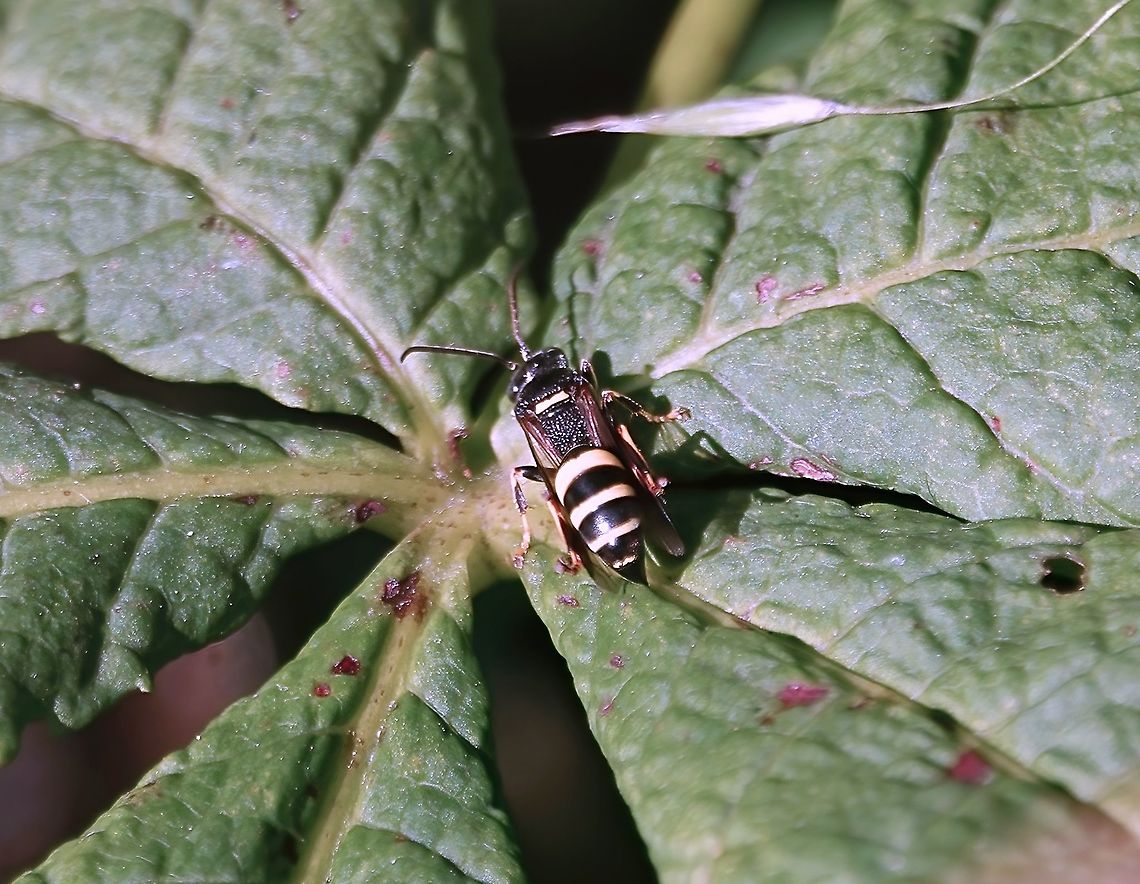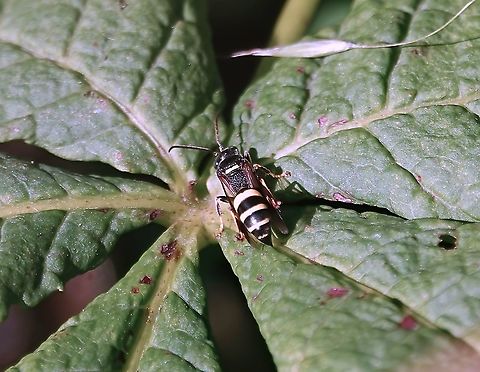 PromotedSpecies introCountry intro
PromotedSpecies introCountry intro
Broad-banded Hopper Wolf (Gorytes laticinctus)
Another rare beastie in the garden!
This solitary wasp is the rarest of the species of Gorytes in the UK, although there are some indications of an increase in it's geographical distribution?
Gorytes is a genus of sand wasps in the family Crabronidae.
It's listed as 'RDB 3' on the UK Red Data Book, indicating "Taxa with small populations in Great Britain that are not at present endangered or vulnerable, but are at risk. These taxa are usually localised within restricted geographical areas or habitats or are thinly scattered over a more extensive range."
Length 9-13 mm. The face is largely yellow, extending above the level of the antennal insertions, and the markings distinctive enough to identify from a good photograph.
This specimen has been confirmed by a UK leading expert.
Nests are excavated in the ground by the female, and the larvae supplied with froghoppers or similar bugs. The adults feed on nectar.
On the wing between June and September, usually found on rough vegetation such as bramble, in the south of England.
Occasionally found in gardens.
Lucky me!


comments (5)
Have you considered reporting to BWARS? https://www.bwars.com/home
They also have a Facebook page: https://www.facebook.com/BWARS-Bees-Wasps-and-Ants-Recording-Society-146509645514261/
It has been really interesting creating this species, so thank you for that! Please check through the info to make sure I have not missed anything. Thanks. Posted 4 years ago
I'll certainly be doing that. Posted 4 years ago
I hadn't actually spotted new species were written up in so much detail.
I need to look back on a few.
Posted 4 years ago